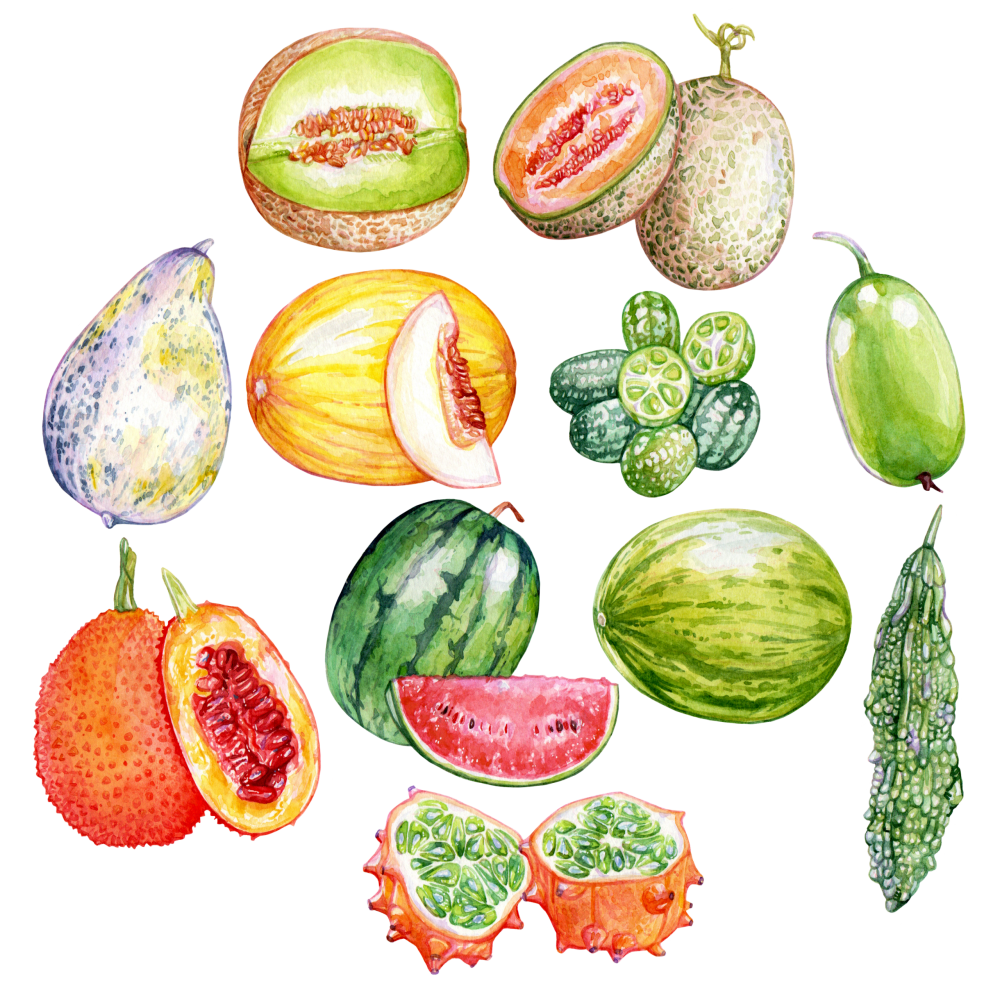Melon

Latin name: Cucurmis spp., Benincasa spp., and Citrullus spp.
Uses: fruit, seeds, flavoring
What are melons?
Melons are a highly diverse bunch of fruits, though they’re all in the same family as cucumbers and squash (which means they’re botanically berries). There are three basic types, based on the three melon genera: watermelons and egusi (an African type grown for its seeds); winter melon (used in Asia, typically cooked); and horned and muskmelons (which includes most other melons, including cantaloupe and honeydew).
Why are melons healthy?
Melons, particularly cantaloupe and honeydew, are high in potassium, which can help combat hypertension. They’re also a good source of beta-carotene and vitamin C. Watermelon may help reduce the risk of colon cancer.
What do melons taste like?
All melons derive some of their heady fragrance from the aromatic compounds ethanol (the alcohol in alcoholic beverages), ethyl acetate, and acetaldehyde. Winter melon is probably the mildest; it’s not sweet, has a spongy texture, and a very subtle cucumber/squash flavor. Watermelon has a juicy yet crunchy texture that gets crumblier and sweeter as you move away from the rind toward the core. Although the various cantaloupes and honeydews (as well as the other muskmelons) are distinct in their flavor, aroma, and sugar content, overall they share a sweet-fruity and grassy-cucumber fragrance with musky notes of burnt sugar.
How do I use melons?
They’re all wonderful eaten fresh, alone or in fruit salads. Watermelon has all kind of uses beyond the picnic basket. You can grill it like a juicy steak — just peel the rind and slice the melon into two-inch-thick rounds, soak it in your favorite marinade, then throw it on the grill. Watermelon rind is a common pickle in the American South, but in Russia they pickle the flesh as well, and cook watermelon down into a syrupy treacle. Egusi (the seeds of a watermelon-type African melon) is a major West African ingredient commonly used to thicken (and add protein to) soups and stews.
What do melons pair well with?
Though different melons pair better with various ingredients, they all improve dramatically with a little salt and chile. Cantaloupe is traditionally paired with prosciutto for this very reason, but a sprinkle of salt (especially chile salt) is all you need. Watermelon loves feta for the same reason. They also brighten right up with a squeeze of citrus, which helps temper their dank sweetness.
Muskmelons are lovely with tender herbs like tarragon, Thai basil, chervil, and lovage, but be sure and add a touch of salt to intensify the flavor — shaved ricotta salata is a perfect choice here. Add a dressing of champagne vinegar and either a toasted nut oil or grassy olive oil to round out the flavors beautifully.
Where do melons grow?
Melons were grown by ancient Egyptians and are thought to have originated in Africa or Southwest Asia. Nowadays most melons are grown in China, followed by Turkey, India, and Iran. Though cooler-climate/faster-fruiting cultivars have been developed over the centuries, melons still require stretches of hot weather to bear fruit.
How to buy melons:
A ripe melon should be heavy for its size and smell sweet.
Fun melon fact:
In Japan, some watermelons are grown inside boxes so they end up shaped like perfect cubes, making them easier to fit in small fridges.





